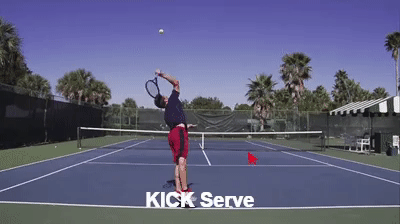Raul_SJ
G.O.A.T.
Heath: "We use ulnar deviation to make the ball land shorter. You can call it ulnar deviate, snap, flex... whatever you want to call it."
I am already aware that the ball leaves the racket before the wrist reaches the neutral flexion position (dotted blue line below). So when Heath says "snap sooner" to make the kick land short. Is Heath referring to earlier ulnar deviation? Or is he referring to earlier wrist flexion during the time wrist is flexing and moving towards the 0 degree neutral flex position?

Don't really want to get bogged down on the terminology.
I just want to know if landing the kick short is a function of "earlier" ulnar deviation. And I'm not clear how it is possible to ulnar deviate sooner.
I am only familiar with earlier/later pronation.
I am already aware that the ball leaves the racket before the wrist reaches the neutral flexion position (dotted blue line below). So when Heath says "snap sooner" to make the kick land short. Is Heath referring to earlier ulnar deviation? Or is he referring to earlier wrist flexion during the time wrist is flexing and moving towards the 0 degree neutral flex position?

Don't really want to get bogged down on the terminology.
I just want to know if landing the kick short is a function of "earlier" ulnar deviation. And I'm not clear how it is possible to ulnar deviate sooner.
I am only familiar with earlier/later pronation.
Last edited:



